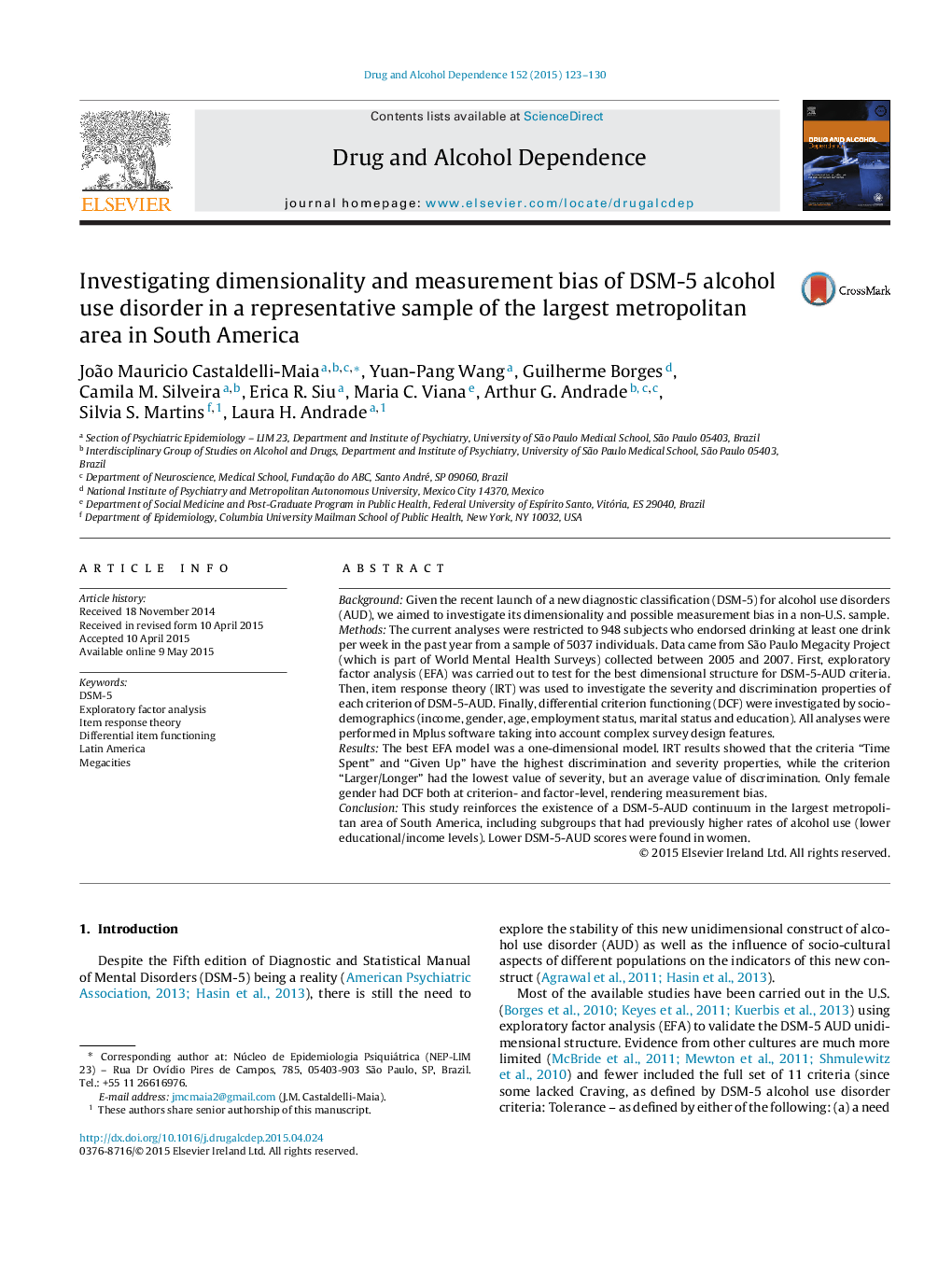| کد مقاله | کد نشریه | سال انتشار | مقاله انگلیسی | نسخه تمام متن |
|---|---|---|---|---|
| 1069778 | 1486139 | 2015 | 8 صفحه PDF | دانلود رایگان |

• The first full-set DSM-5 criteria population-based study on a developing country.
• Female was the most problematic subgroup for the diagnosis of DSM-5 AUD.
• Given Up and Time Spent had high levels of severity and discrimination.
• Larger/Longer had low level of severity but high level of discrimination.
BackgroundGiven the recent launch of a new diagnostic classification (DSM-5) for alcohol use disorders (AUD), we aimed to investigate its dimensionality and possible measurement bias in a non-U.S. sample.MethodsThe current analyses were restricted to 948 subjects who endorsed drinking at least one drink per week in the past year from a sample of 5037 individuals. Data came from São Paulo Megacity Project (which is part of World Mental Health Surveys) collected between 2005 and 2007. First, exploratory factor analysis (EFA) was carried out to test for the best dimensional structure for DSM-5-AUD criteria. Then, item response theory (IRT) was used to investigate the severity and discrimination properties of each criterion of DSM-5-AUD. Finally, differential criterion functioning (DCF) were investigated by socio-demographics (income, gender, age, employment status, marital status and education). All analyses were performed in Mplus software taking into account complex survey design features.ResultsThe best EFA model was a one-dimensional model. IRT results showed that the criteria “Time Spent” and “Given Up” have the highest discrimination and severity properties, while the criterion “Larger/Longer” had the lowest value of severity, but an average value of discrimination. Only female gender had DCF both at criterion- and factor-level, rendering measurement bias.ConclusionThis study reinforces the existence of a DSM-5-AUD continuum in the largest metropolitan area of South America, including subgroups that had previously higher rates of alcohol use (lower educational/income levels). Lower DSM-5-AUD scores were found in women.
Journal: Drug and Alcohol Dependence - Volume 152, 1 July 2015, Pages 123–130